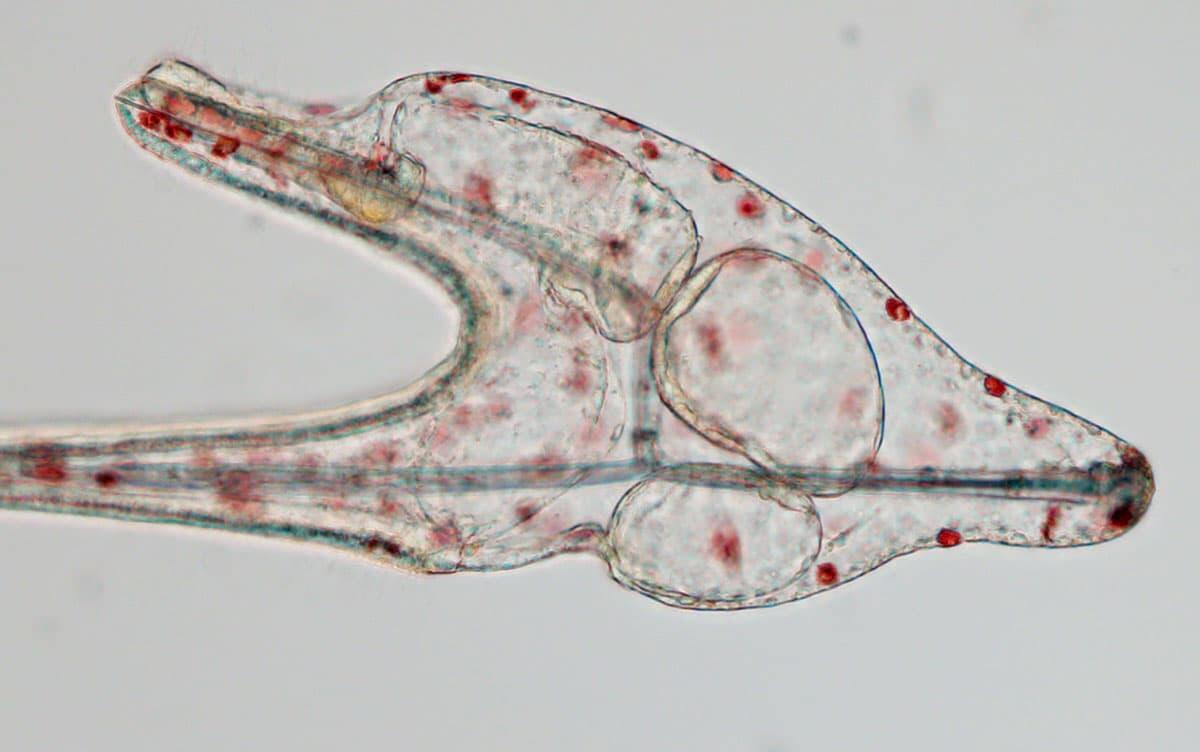Research News
Discovery of a Light-Responsive Mechanism Whereby Sea Urchins Open the Entrance and Exit to Their Intestines
 ©Shunsuke Yaguchi
©Shunsuke Yaguchi
A research group at University of Tsukuba has discovered that the entrance to the gut (pylorus) and the exit (anus) of sea urchin larvae open in response to light, each to different wavelengths. This precise control of the pylorus and anus was crucial for evolution, enabling efficient digestion and absorption by regulating food retention in the digestive tract.
Tsukuba, Japan—Many bilaterally symmetrical animals, including humans, possess a continuous digestive tract that extends from the mouth to the anus, allowing food digestion and absorption while expelling waste. This type of gut is a recent evolutionary development in metazoans; its function requires precise control of both the mouth and anus. In their study, the authors used sea urchin larvae, which have a simple digestive system, as a model to investigate the specific underlying mechanisms for this regulation.
The group discovered that in sea urchin larvae, the pylorus (entrance) and the anus (exit) open in response to light. Interestingly, each reacts to different wavelengths, being exceedingly rare for both to open simultaneously. When one opens, the other remains closed, and vice versa, allowing food to be retained in the digestive tract, for efficient digestion and nutrient absorption, and suggesting that this mechanism likely evolved to ensure optimal digestive efficiency. Their findings suggest that light-regulated control of the digestive tract may have contributed to metazoan's success by helping them efficiently adapt to changes in their external environment.
Further research into how the nervous system regulates the opening and closing of the digestive tract's entrance and exit will provide new insights into how the evolution of digestion is linked to the development of the nervous system and the brain.
###
This work is supported by JST PRESTO Grant number JPMJPR194C, JST A-STEP Grant number JPMJTR204E, JSPS KAKENHI Grant number 23K23933, the Toray Science Foundation and Takeda Science Foundation to S. Yaguchi. AMED CREST Grant number 22gm1510007 and Research Foundation for Opto-Science and Technology to T. Yamashita.
Original Paper
- Title of original paper:
- Light-modulated neural control of sphincter regulation in the evolution of through-gut
- Journal:
- Nature Communications
- DOI:
- 10.1038/s41467-024-53203-7
Correspondence
Associate Professor YAGUCHI Shunsuke
Shimoda Marine Research Center / Institute of Life and Environmental Sciences, University of Tsukuba
Associate Professor YAMASHITA Takahiro
Department of Biophysics, Graduate School of Science, Kyoto University
Professor YAMAMOTO Takashi
Graduate School of Integrated Sciences for Life, Hiroshima University
Related Link
Institute of Life and Environmental Sciences
Shimoda Marine Research Center





